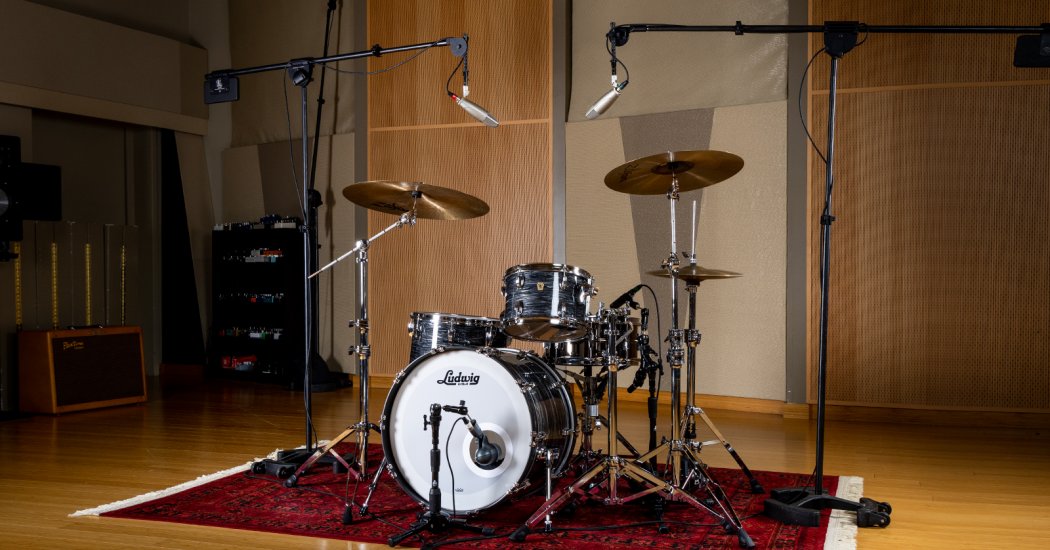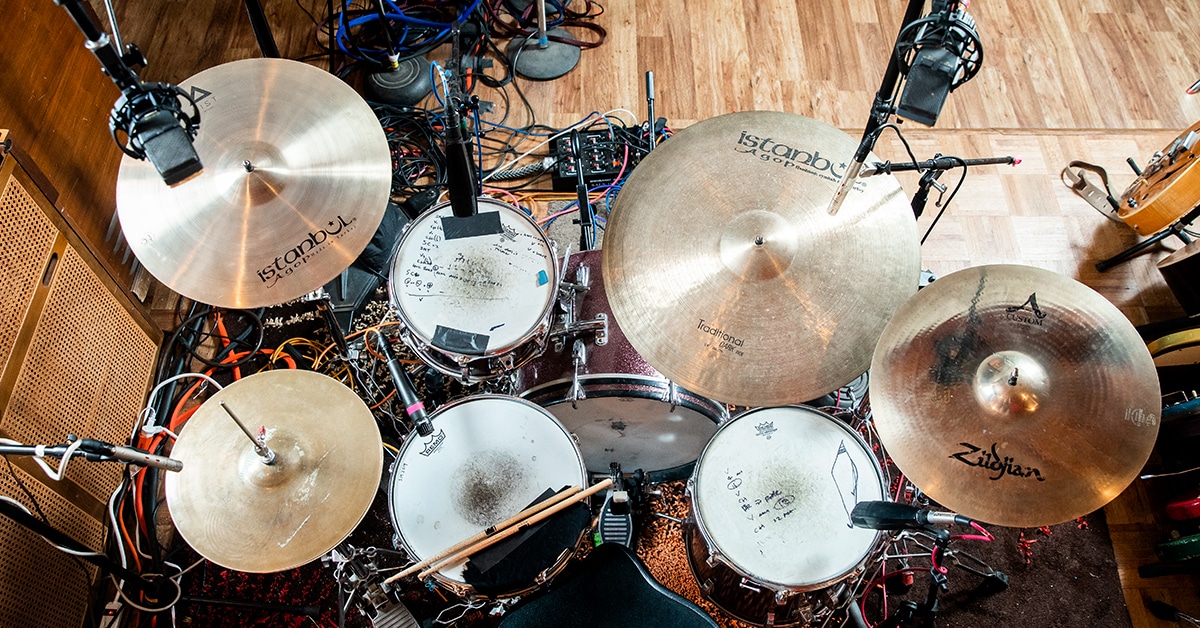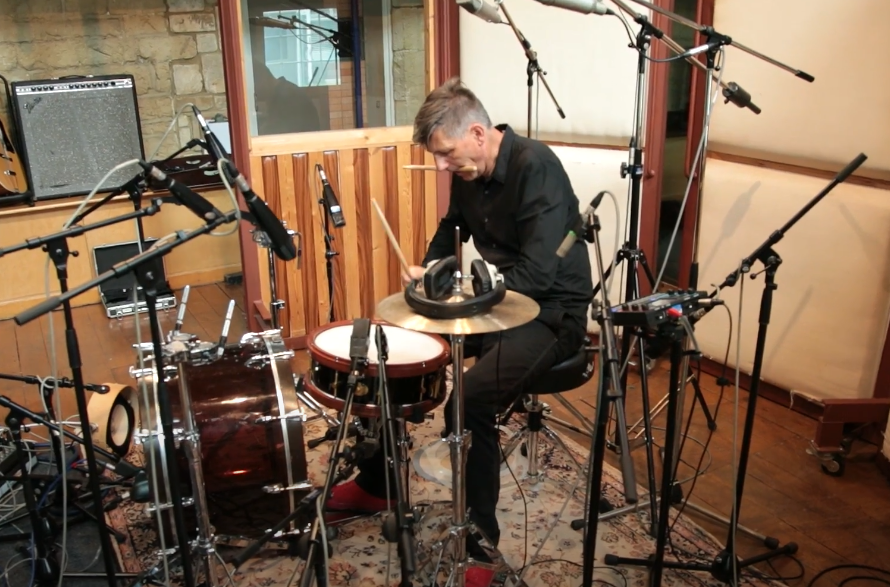Drum recording involves the process of capturing the sound of drums using microphones and recording equipment. This is crucial for producing quality audio tracks and albums.
Recording drums is an essential part of music production for any aspiring musician, songwriter or producer. It is where the sound of the drums is captured and transformed into a professionally produced track. The process involves strategically positioning microphones around the drum kit to pick up each individual sound and create a cohesive mix.
The sound engineer then uses various techniques, such as EQ and compression, to enhance the sound and create the desired vibe. There are different approaches to drum recording, including close-miking, overhead miking, and room miking, each with its unique sound. With the right techniques and equipment, the drum recording process can result in a dynamic, powerful and polished track that captures the essence of the music.
Importance Of Drum Recording
Drum recording is crucial for producing high-quality music. It captures the nuances of the drummer’s unique style and adds depth to the overall sound of a track. A well-recorded drum sound can make all the difference in the success of a music project.
Drums are undoubtedly the backbone of a song, and they play a significant role in creating the foundation and the overall sound of a track. As a result, the drum recording process is crucial in capturing the clarity, depth, and dynamics that a drummer produces. A well-recorded drum track can make all the difference between a song that sounds amateur and one that sounds like it was professionally produced.
Creating The Foundation Of A Song
The drum set is all about rhythm and timing, and it is essential in laying down the backbone of a track. A well-recorded drum track enables other musicians to follow along and speak to the song’s rhythm and tempo. The drums are the core of any track and serve to create the foundation that everything else in the mix will be laid on top of.
Imparting A Unique Character To A Song
Each drum kit, drummer, and drum capture can bring a unique character to a song. The drum recording process involves capturing the performance and character of the drummer and the drum kit to produce a sound that is unique to that specific drummer’s playing style. A good recording engineer knows how to capture the nuances of the drummer and the drum kit, which can breathe life into a song and make it stand out from the rest.
Conclusion
A poorly recorded drum track can ruin what could have been a fantastic song, regardless of how good the rest of the recording is. In contrast, a well-recorded drum track can take an average song and turn it into a hit. The drum track is critical to the song’s overall structure, and when done right, it can impart a unique character that sets it apart from other tracks. Therefore, investing time and effort into recording drums correctly can make a world of difference in the quality of your music.

Credit: www.sweetwater.com
Key Factors That Influence Drum Sound
If you want to achieve the perfect drum sound, there are several factors that you should consider. From the room acoustics to the choice of cymbals, each component plays an essential role in creating a professional-grade recording. Let’s explore the key factors in detail:
Room Acoustics
The room acoustics are a crucial factor in determining the sound of your drums. The shape and size of the room, as well as the materials used in it, will contribute to the tone and quality of your recordings.
The following are some tips to help you optimize your room for drum recordings:
- Choose a room that is the right size for your needs.
- Use acoustic treatment to control the reflections and reverberation.
- Place the drums in the optimal location within the room to achieve the desired sound.
Drum Tuning
The way you tune your drums can significantly impact their sound quality. Tuning refers to adjusting the tension of the drumheads to achieve the desired pitch and tone.
The following are some key aspects to consider when tuning your drums:
- Ensure the drum is in good condition before starting to tune.
- Use a drum key to tighten or loosen the tension rods.
- Pay attention to the pitch and tone of each drum and make adjustments as necessary.
Choice Of Cymbals
Your choice of cymbals can make or break the sound of your drum recordings. The number of cymbals you use and the types of cymbals you select all play a critical role in achieving the desired sound.
Here are some tips to help you choose the right cymbals for your recording:
- Experiment with different cymbals and their positioning to discover the sound you want to achieve.
- Ensure that each cymbal complements the other cymbals in the set.
- Consider investing in higher-quality cymbals for a more professional sound.
Conclusion:
By considering these key factors, you can create a professional-grade drum recording with a desirable sound. The room acoustics, drum tuning, and cymbals all contribute to the final result, and experimentation is key to finding the perfect combination for your unique sound.
Preparation For Drum Recording
Recording drums can be challenging, but with the right preparation, you can get excellent results. Here are some important steps to take before you begin drum recording:
Selecting The Right Drum Kit
Choosing the right drum kit is vital for a successful recording. Consider the style of music you are recording and select a kit that suits that style. Are you recording a heavy rock track or a softer ballad? You want to make sure the kit you choose matches the sound you’re aiming for. Also, ensure that the drums are in good condition and that the sizes and tuning of the drums match.
Auditioning The Drums
Before recording, it’s essential to audition the drums to ensure that they sound good. This step is crucial because it allows you to detect any tuning issues, rattles, or unwanted harmonics. Take some time to test each drum to hear how it sounds and make any necessary adjustments.
Setting Up The Microphones
Microphone placement is crucial when recording drums. The placement and number of microphones will depend on the sound you’re trying to achieve, the recording space acoustics, and the microphone types available. To get the best results, experiment with different microphone placements and listen to each arrangement carefully. Once you find a good set up, double-check that each microphone is correctly connected.
Summary
Taking the time to prepare for drum recording can improve the overall sound quality of your recordings. Remember to consider the music style, audition the drums, and experiment with microphone placement to get the best results.
Recording Techniques For Drums
To capture the true essence of a drum kit, employing the right recording techniques is crucial. Experimenting with mic placement and incorporating high-quality mics can yield exceptional results in drum recording. Whether in a professional studio or a home setup, following these techniques can take your drum recordings to the next level.
Drum recording is an art that requires technical skills, knowledge, and experience. Whether you are recording drums for a live performance, studio production, or YouTube video, the recording techniques used can make a big difference in the final sound quality and overall satisfaction.
Close-mic Recording
Close-mic drum recording involves placing microphones close to each drum in the kit. The result is a clear and crisp sound with every beat distinguished. To achieve this, use condenser microphones, dynamic microphones, or a combination of both and place them approximately 1-3 inches away from the drum.
Overhead Mic Recording
Overhead mic drum recording captures the overall sound of the kit. Place two microphones in an X-Y configuration above the kit at a height of around six feet to capture the sound of the cymbals, toms, and snare. Overhead mic recording creates a wide stereo sound and is suitable for creating a three-dimensional feel.
Room Mic Recording
Room mic drum recording involves placing microphones farther away from the kit and not close to individual drums but in the same room. A room mic is used to capture the overall sound of the drums, to create depth and spaciousness. In contrast to close-mic recording, room mic recording is suitable for creating ambiance, warmth, and a natural feel. Combining the techniques mentioned above can create a well-balanced drum sound. Experimenting with different positions, microphone types, and recording techniques can also create unique sounds that can make your drums stand out. Remember, the goal is to capture the drums’ natural sound and produce high-quality recordings that can be easily mixed and mastered.
Post-processing And Mixing Techniques
Achieving a great drum recording involves post-processing and mixing techniques. With proper EQing, compression, and room mic placement, you can create a balanced mix with punchy, dynamic drums that enhance the overall sound of your track.
Recording Drum Covers
Recording drum covers can be challenging, but it’s also a fun and rewarding experience for drummers who want to showcase their skills. Whether you’re recording a cover for your YouTube channel or for a friend, the goal is to capture the essence of the original recording while adding your personal flair to the performance.
Choosing The Right Song
The first step in recording a drum cover is choosing the right song to cover. You want to pick a song that you enjoy playing and that you’re comfortable performing. Keep in mind that some songs may be easier to record than others, especially if you have limited experience recording drums. It’s important to pick a song that showcases your strengths as a drummer and allows you to add your unique style to the performance.
Playing The Drums With The Click Track
When recording a drum cover, it’s important to play with a click track. This will ensure that your performance is in time with the original recording. It may take some time to get used to playing with a click track, but it’s an essential part of the recording process. Make sure that you practice playing with the click track before you start recording so that you’re comfortable with the tempo and feel of the song.
Using Headphones For Monitoring
Monitoring your recording is essential to ensure that you’re capturing the best possible performance. Using headphones will allow you to hear the click track and the recording as you play. This will help you stay in time with the song and make adjustments as needed. Make sure that you have a good-quality pair of headphones that will allow you to hear the nuances of your performance.
Drum Sampling Techniques
Discovering the right drum sampling techniques can truly make a difference in your drum recording. With the right setup, you can capture the perfect sound that is well-suited for your music, giving your audience an experience to remember.
Drum sampling involves recording and manipulating live drum sounds to create a customized beat. It’s a common practice in the music industry, primarily in electronic genres. Sampling techniques come in handy when there’s no access to a drum set or when sound replacement is required. Below are some drum sampling techniques that can help bring your beats to life.
Creating Custom Drum Samples
Custom drum samples allow for greater flexibility and freedom when it comes to drum production. The easiest way to create custom drum samples is by recording live drums and chopping the loops into individual hits. You can also use software instruments such as Native Instruments’ Battery and Ableton’s Drum Rack to create custom drum samples. Other methods include layering existing samples and editing them to fit the desired sound and pitch. It’s worth experimenting with different drum sounds before settling on the perfect one. Creating custom drum samples can bring an authentic and unique sound to your production.
Layering Drum Samples
Layering drum samples is when two or more sounds are combined to create a new, fuller sound. This technique is commonly used when creating drum loops. For instance, layering a kick drum sample with a bass drum sample can produce a powerful, punchy sound. To layer drum samples, start by selecting two or more samples that have compatible frequency spectrums. Then adjust the volume, pitch, and panning to achieve a cohesive blend. Layering can also be done with other percussion instruments such as snares, hi-hats, and cymbals.
Adding Effects To Drum Samples
Adding effects to drum samples can alter the sound and add depth to the overall mix. There are a variety of effects that can be used, such as reverb, delay, distortion, and compression. Reverb adds space and dimension to the drums, while distortion can add grit and intensity. Compression is a common effect used on drums to control the dynamics and sustain. It helps even out the volume levels of the individual hits and adds glue to the mix. When adding effects to drum samples, it’s important to use them tastefully and in moderation. Too much processing can ruin the natural sound of the drums.

Credit: www.guitarcenter.com

Credit: rolandcorp.com.au
Frequently Asked Questions For Drum Recording
What Is The Best Way To Record Drums?
The best way to record drums is by placing microphones on each drum, the snare and the cymbals. The microphones should be positioned properly to capture the sound of each drum. It is important to experiment with different microphone positions, and to use a quality audio interface and software.
Additionally, consider the acoustics of the room and use sound-absorbing materials to reduce unwanted reflections.
How Do You Record Drums Without Drum Mics?
To record drums without mics, place the drums in a room with good natural acoustics, which will create a natural reverb. Use overhead mics to capture the sound of the drums, ideally using a stereo pair. Make sure to position them correctly, equidistant from the snare drum and at a height that captures the cymbals.
You can also use a single room mic to capture the overall sound.
How Loud Should I Record Drums?
Keep the drums around 85-90 dB when recording. This level is loud enough to capture the sound properly, but not so loud as to overwhelm other instruments in the mix. Adjust the levels accordingly if you’re miking individual pieces of the drum kit.
It’s also important to use ear protection for both the drummer and audio engineer.
How Do Artists Record Drums?
Artists typically record drums by positioning microphones around the drum kit and setting up a mixing console to capture multiple channels of audio. The placement of the microphones and the mixing process are crucial in achieving a clean and balanced drum sound.
The drums are then usually mixed and edited using digital audio software to refine the overall recording.
Conclusion
Drum recording is a crucial aspect of music production that requires careful consideration. The choice of microphones, placement, and room acoustics can greatly impact the final outcome. By applying the tips discussed in this blog post, you can capture a high-quality drum sound that enhances your music and captivates your listeners.
Remember to experiment and trust your ears, as every recording situation is unique. With practice and patience, you can master the art of drum recording and achieve great results.